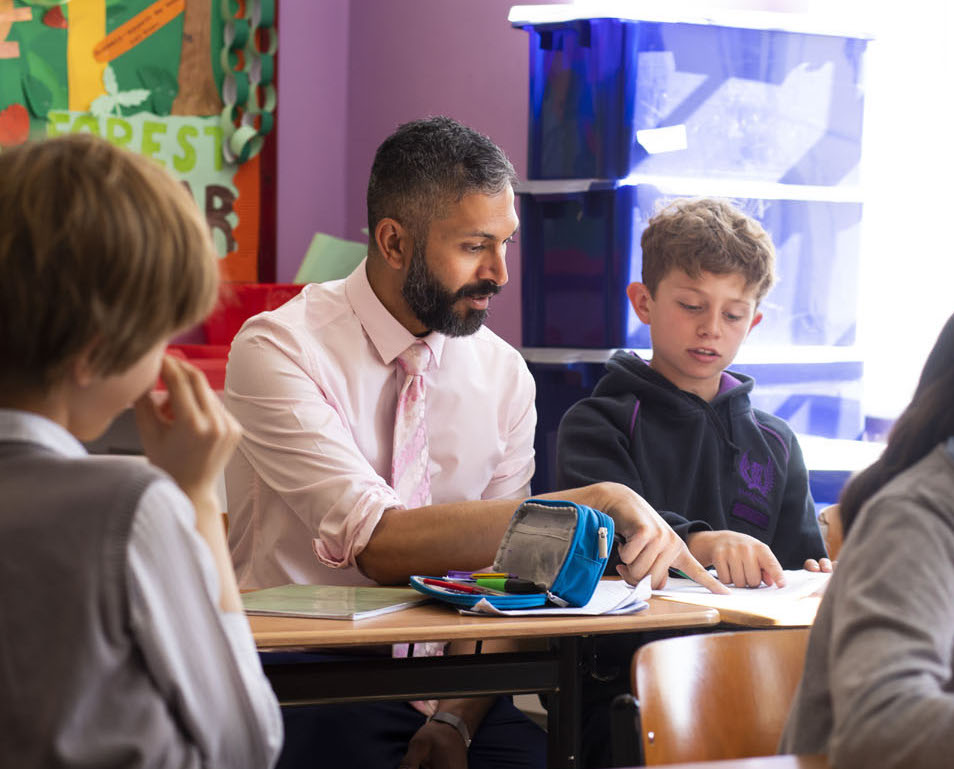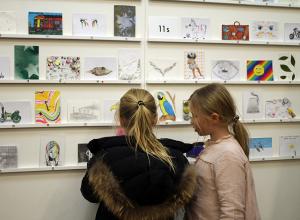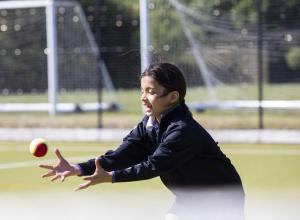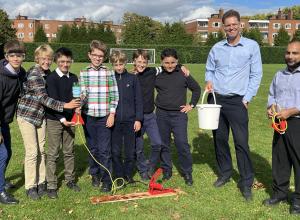
How do you help your child with her homework without causing confusion or an argument. Warren Rodricks offers his four rules for frustration-free Maths home studies
One of the questions parents ask me most often is 'How can I help my child with their Maths?'. Back when I was starting out on the Maths Mastery path years ago the answer seemed to me to be relatively straightforward. Start by trying to look at the world and specifically, mathematics, through the child’s eyes. Sit down with him or her over their homework and let them lead the process and ask questions as needed.
Some years on, experience has taught me the teaching ideal I had prescribed isn’t quite as simple to achieve as I had imagined. Then I had no children of my own. Today, as a father myself, I've learnt from personal experience about the unique frustrations that teaching your own child brings with it.
As much as I adore her, I have to admit that no pupil I have encountered in many years of teaching has challenged my skills and my patience more than my own daughter. It’s not that she’s difficult. Quite the opposite: thoughtful, reflective, empathetic and hard-working, Olivia is a model student. Even so, despite our closeness, when explaining how to tackle a problem I’ve often found myself caught up in conflict. 'That’s not what Miss said' or 'That’s not how Miss does it', have been common phrases in exchanges that have sometimes turned into battles.
I know from talking to parents that many of them have encountered similar clashes. It’s often a question of divided loyalties. Like my daughter, every pupil wants to get his or her Maths right. But just who is right? Facing a choice between following their beloved parent or their trusted teacher it’s hardly surprising that children are left feeling anxious, confused or angry.
So how can we defuse this conflict before it happens and help our children along the way? As both a parent and a teacher, I have learnt four things, down the years, all of them derived from Maths Mastery that I think can make a difference. I’ll refer to them as rules, but really they are more like suggestions, really, really good ones.
Rule 1: It is not about how we see the world, it is about how they see the world.
This first rule is the Maths Mastery principle I outlined in the first paragraph of this blog. You begin by asking your child to explain to you what they know. As I have already confessed this first rule was one I found easier to promote back in the days before I was a Dad. What makes it so difficult to stick to is that as parents we don’t want our children to struggle. We just want them to ‘get it’ and we constantly find ourselves wanting to provide solutions.
Hard as it is, though, I try to resist the temptation to lead the way. Struggle is essential to development and by jumping to the rescue too early I deny my daughter the opportunity to develop her metacognition* (see below). One of the aspects I love about mastery is the approach to a concept. Before I do anything, I ask the students to show me or tell me what they already know. I let my students think, contemplate, discuss, debate before I say anything.
However, with my daughter I struggle with this even to this day. As the years have passed, I have become much more aware of this and now I try to start our discussions with something like, “What do you think needs to be done?” or “How would you do it?” They are questions that place the responsibility on my daughter and allow her to show me what she is doing in school and how she is making sense of it. At this point and during most points, to be honest, it doesn’t matter what I know, it only matters what she knows. I can offer tweaks to her method but I don’t try to sell her on my method. Because that is just it. It’s my method. What works for me won’t necessarily work for her.
Rule 2: Use what you have around you to help make learning concrete.
At times, mathematics has been rushed for many students and they are asked to think in the abstract before having a concrete understanding of a concept. The concrete understanding of a number or a concept is vital when trying to build towards higher level understanding. The beauty of early years teaching is that it consistently places the concrete world directly into the hands of children and asks them to construct meaning for themselves. Somewhere, for some strange reason, schools across the world lose sight of this. This wonderful way of learning is replaced by abstraction and that hands-on experience can no longer be drawn upon for a student to understand what is happening.
At school, we have a plethora of tools to help us. From counters, to number fans, to multilink blocks. What these resources do is place learning back into the hands of our students. They allow students to create, make mistakes and then re-create. At home, many, if not most students, would benefit from the same type of resources. Luckily you don’t have to rush out and buy a heap of manipulatives because the household is already full of useful tools. Dried pasta is a great counter that students can add, subtract, multiply and divide with. Any cake, chocolate bar, pie or pizza (my personal favorite) can be used in the exploration of fractions. This concrete approach is used throughout our time at school and it is an excellent way of linking up what we do here with the support they may need at home.
Rule 3: Use the ‘real’ world as a way to support understanding but also as a way to extend learning.
Mathematics is not a language to be spoken only in classrooms and used only as part of theories. It is meant to help us understand the wonderful world around us. As such, the best way to help students who may struggle with a concept or students who need an extra challenge is to use the outside world to further their development. One of the methods I use as a teacher is to ask my students where they see a concept or calculation in the world and then to write a realistic story about it. It forces them to think about how we use the mathematics outside of the classroom and what is real or unreal given the numbers or concepts involved. This in turn gives them a deeper understanding of why the maths is important and how it actually works beyond our lessons. It is something that I use with my daughter at home.
By asking our children to connect their learning to their surroundings we give them both structures needed to understand as well as open them up to possibilities of why mathematics makes a difference and this can be huge in them developing a positive attitude towards a subject that many find challenging.
Rule Four: Time is important but it is a case of quality over quantity.
I have lived a fair few years and worked at being a few different things and never have I ever had a mathematical emergency. No one has ever jumped out from behind a bush demanding the answer to 6 times 5. Thus, as you work with your child at home, afford them the time to think, to rethink and to reflect. It does them much better thinking through one question properly during their ten-minute maths than racing through all of them making errors throughout. Time does become important and consolidation requires a certain quantity of questions to be answered accurately, but to best support them at home, give them the luxury of the time you have to make sure they don’t become anxious when finding a concept challenging. What have these lessons meant to me? Well, my daughter still feels comfortable asking me for help. Despite the occasional burst of emotion (mainly mine) she knows I want to help and she knows I won’t impose my understanding on her. She is happy to let me know when she does not quite get something and she knows we’ll work as a partnership to help her figure things out. However, I know she also needs to figure out the mathematical world that she is encountering with greater independence and no amount of my knowledge will help, at times. Which is a lot like the rest of a child’s growth; we may have been there and done that, but now it’s their turn to figure things out.
*Metacognition is central to Maths Mastery. It involves asking students to consider their own thinking, to ask what and why they are doing the things that they do. For more detail please see my last post.
Mr Rodricks welcomes feedback on this blog to website@harrodian.com







